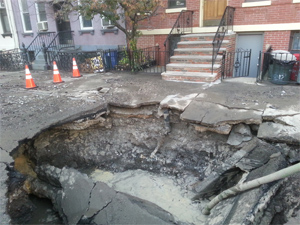New Jersey Future Blog
First-Time Homebuyers, Renters May Be Priced Out Of NJ
October 21st, 2008 by Tim Evans
- Data on demographics and on building permits for multi-family housing (structures containing three or more units) suggest that the market for first-time homebuyers, as well as renters, is being underserved throughout much of New Jersey.
- Between 2000 and 2007, half of all building permits statewide for multi-family housing were issued in just 22 of New Jersey’s 566 municipalities. Over the same time period, more than half the state’s municipalities (311) did not authorize any multi-family housing at all.
- A recent study (page 16) by Princeton University’s Policy Research Institute for the Region (PRIOR) found that most of New Jersey’s net out-migration to other states since 2000 took place among the state’s lowest 20 percent of income-earners.
- Between 2000 and 2006, New Jersey’s population of 25-to-34-year-olds declined by 8.9 percent, a larger decline than all but three other states (Massachusetts, Connecticut and New York). Nationally, the population in this age range remained unchanged.
High Cost of Housing Fuels Low-Income Flight
For many years, New Jersey has been losing more residents to other states than it has been attracting from the rest of the country; the state’s modest increase in total population has been due primarily to immigration from other countries. Migration to the Sun Belt is nothing new for New Jersey or its neighbors in the Northeast, but net domestic out-migration from the region has increased steadily and dramatically in this decade—from a net loss of about 6,900 domestic migrants in 2000 to a loss of 72,500 in 2006.
Over the same period, home values have been rising much faster than incomes in New Jersey. Between 2000 and 2006, the median household income increased by 16.9 percent while the median home value rose by 114.6 percent. Median home value thus increased 6.8 times faster than median household income. Only California and Florida had higher ratios
These two phenomena may not be unrelated. As the PRIOR study (“Trends in New Jersey Migration: Housing, Employment and Taxation”) reported, “The main source of net out-migration in New Jersey is lower-income individuals,” and out-migrants tend to move to states with much lower home values and property taxes. The report concluded, “The most important step to reducing out-migration would be to improve the affordability of housing in the state, particularly for low-income residents.”
The U.S. Census Bureau’s Current Population Survey (table 26) provides more evidence of the link between housing costs and relocation. It asks movers about their reasons for relocating, and finds that housing-related reasons outstrip reasons related to family or employment.
Because lower-income households are more likely to be renters, high rental costs may be driving out-migration to a greater degree than the high cost of home purchases. In an Oct. 5 article headlined “Rentals Remain Robust,” The New York Times reported that New Jersey’s rental market is particularly tight in the wake of the subprime mortgage crisis. Many households aspiring to homeownership may now have to settle for renting, fueling demand for what was already a shortage of affordable rental housing.
The disproportionate loss of 25-to-34-year-olds, who are more likely to be renters and are also the age group most likely to be looking to buy a first home, further suggests that the housing needs of those of more modest means are not being met. The rapid rise in home values relative to income puts homeownership out of reach to many of these households.
Garden State Giveth, Keystone State Taketh Away
One option for aspiring homeowners who can’t afford to buy—or even rent—in New Jersey is to move out of state. On the list of states to which New Jersey loses the largest net outflows of migrants, one stands out: Pennsylvania. Unlike other major destination states (Florida, North Carolina, Virginia), Pennsylvania is not experiencing rapid population growth overall. But its proximity allows New Jerseyans in search of less expensive housing to move across the Delaware River without having to change jobs or give up their social networks. Median home values in 2006 in Monroe and Northampton counties in eastern Pennsylvania were lower than in all but three New Jersey counties (Camden, Cumberland and Salem) and have increased more slowly since 2000 than in all but Salem County.
The PRIOR report makes the important point that out-migration of residents is not necessarily a harbinger of economic hardship. As long as the jobs and housing units being left behind by the out-migrants are being occupied by new residents—or, in some cases, with the jobs being retained by those out-migrants at the cost of longer commutes—the amount of income being earned by New Jersey residents and businesses should remain relatively stable. The real cause for concern would be an exodus of employers and jobs, of which the report found no evidence so far.
But exporting young and/or lower-income households is not a sustainable practice. The state’s economy needs a certain number of lower-paying service-sector jobs in order to continue functioning, and it needs to accommodate the next generation of workers of all pay levels. As housing becomes less affordable near New Jersey jobs, workers will need to commute from farther across the river. Fueling longer commute times and increasing traffic is not a wise economic development strategy. And if these jobs start to go unfilled because potential workers cannot afford even to commute to them, let alone live near them, businesses may eventually decide it makes more sense to follow the workforce to eastern Pennsylvania and beyond.
If you have any questions about this issue of Future Facts, please contact Tim Evans, Research Director.
















